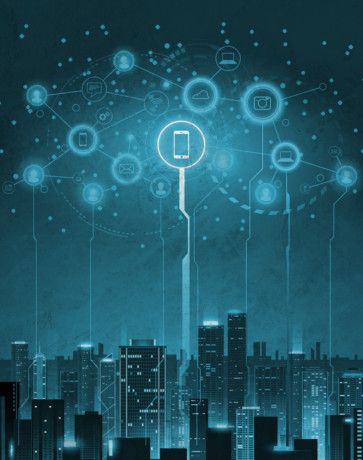
If we want industry to be resilient, we need to prioritize digital.
No business had immunity against 2020 - but some were able to adapt quicker, reducing costs and adjusting output. The common thread to such success was digitization.
Those who were connected prior to the crisis had an edge. And now, everyone else is playing catch up.
See more
- Another milestone with the link now lifted at iconic One Za'abeel 100 Meters above ground level
- Pictures: Brazil's newest and largest bank note
- From Sharjah Corniche to Al Majaz Water Front check out Sharjah neighbourhoods where rents have fallen
- Look: Airlines invent wild ways to make money with borders closed due to COVID-19
- Japan's tuna market, the world's largest, hit hard by coronavirus pandemic
- All the cool, fun activities you’ve missed in the UAE in the last 6 months
Digital is accelerating the major trends of remote-everything, resiliency, efficiency and sustainability, which have been reinforced as core needs by the crisis, and which will redefine the future of industry.
Access from far
The ability to do things remotely is an outcome of a well-executed digital transformation. Remote connection and monitoring have provided organizations the ability to continue operations while prioritizing worker safety. Many industries have been unable to send workers to site during the pandemic, but remote technologies provide the means for sites to be operated without physical presence.
One example of this is the Abu Dhabi National Oil Company. During lockdown, ADNOC’s employees remotely accessed the company’s Panorama digital command center, located at the headquarters. They were able to access real-time information on their operations, giving them the ability to continue to optimize production whilst abiding by all health and safety requirements of the time.
Stage 2
This pandemic is not the first crisis many of us have faced, and it won’t be the last. We have to consider the tools we’re using currently – and then make them more robust to build our resilience. Connectivity allow us to monitor operations, but that’s only the first step.
Automation and analytics follow. Automation can be used to solve problems at a local level, without the need for human involvement, while analytics can be deployed to understand what is happening across factories, buildings, and other infrastructure.
The utility sector greatly benefited from automation and analytics during the pandemic. Enel, an Italian utility, had to manage during lockdown an unforeseen variation in demand for energy – a simultaneous dramatic decrease in industry and significant rise in residential.
With digitization, they can manage their distribution system to reconfigure the network to address changes in near real-time.
Full-scale integration
When it comes to efficiency, a crisis forces a focus on every single avenue to reduce expenditure. Full efficiency can be achieved through four axes of integration.
To start, automating energy use makes both energy and performance more efficient. This should occur across the entire lifecycle of the site, from designing and building, to operating and maintaining, to eliminate all the inefficiencies from capital expenditure to operating expenditure.
Looking vertically, connecting everything from the shop floor to the cloud ensures every piece of data is available and transparent in real-time. Technologies such artificial intelligence on top of this data can address operational and maintenance inefficiencies.
Then, it is the centralization of every site’s data into a unified view of energy and resource consumption, to allow companies to benchmark different facilities against one another.
Almarai is the Gulf region’s largest food and beverage company and has achieved efficiency through digital integration. The company has the world’s largest vertically-integrated dairy manufacturing facility, with 100 filling and packaging lines.
Through digitization, they simplified production processes and put in place smart manufacturing. The result was a 15 per cent efficiency gain across its packaging lines and a reduction in water consumption.
Ensure that future
While digitization will build more resilient industries, it is also will create a more sustainable future for all. The pandemic is one crisis we are facing today, but climate change is another primary threat putting at risk all the progress we have made.
Digital is a catalyzer for green. The journey to sustainability must start with digital - you can do better if you know how you are currently performing. Digital is the key to be able to measure energy and resource consumption.
The most sustainable companies are using the data they’re collecting to continually improve their efficiency and reduce their carbon footprints. Sustainability is a virtuous circle, and the more companies optimize their operations, the better they’re prepared for the next unforeseen scenario.
This year has underlined the need for industry to move faster. Digitization is the way forward. The skills and technologies already exist – it is for us, today, to accelerate.
- Jean-Pascal Tricoire is Chairman and CEO at Schneider Electric. He will be speaking about how industry can repurpose economies through digitization at the Global Manufacturing and Industrialization Summit on September 5.









